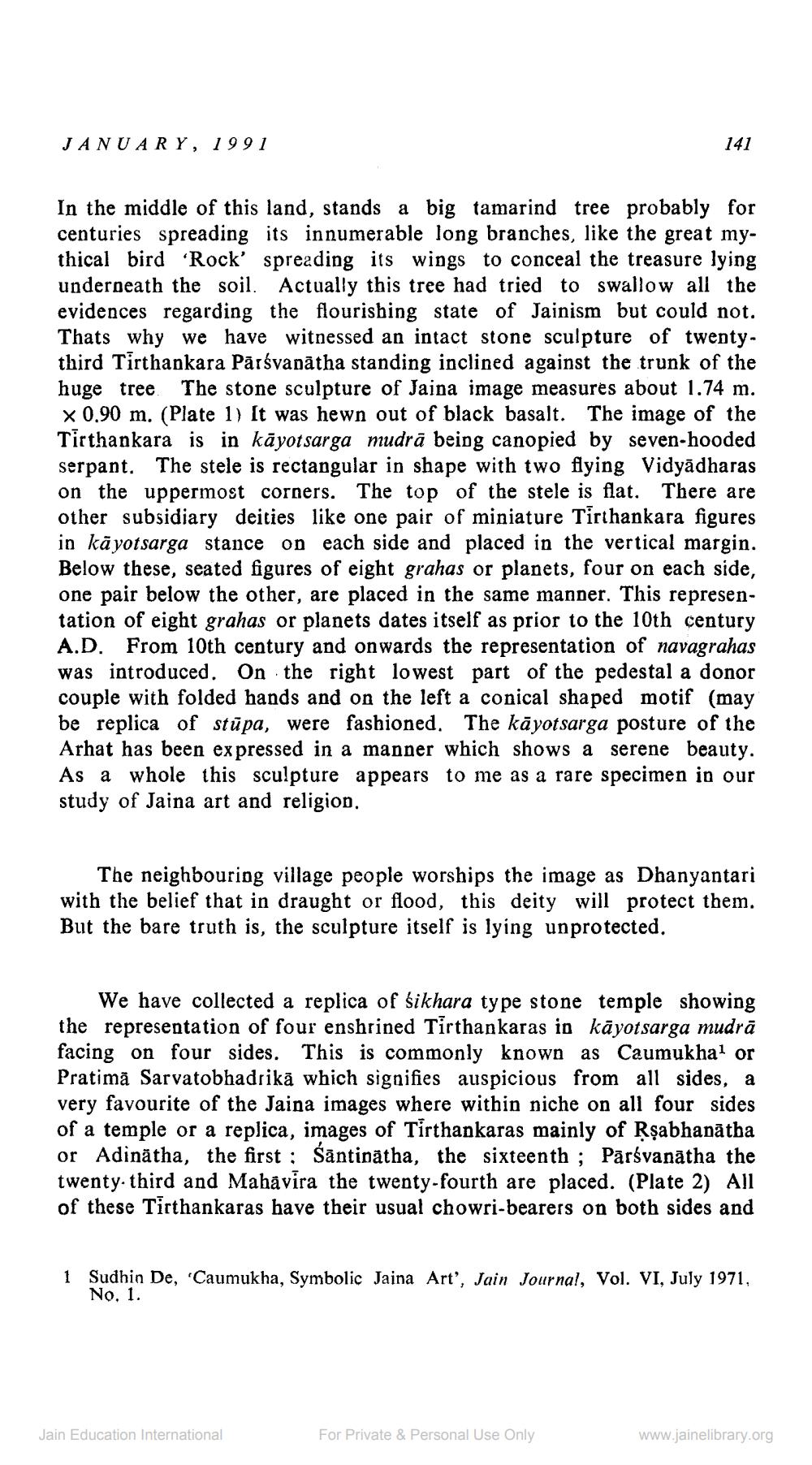________________
JANUARY, 1991
141
In the middle of this land, stands a big tamarind tree probably for centuries spreading its innumerable long branches, like the great mythical bird 'Rock' spreading its wings to conceal the treasure lying underneath the soil. Actually this tree had tried to swallow all the evidences regarding the flourishing state of Jainism but could not. Thats why we have witnessed an intact stone sculpture of twentythird Tirthankara Pārsvanātha standing inclined against the trunk of the huge tree. The stone sculpture of Jaina image measures about 1.74 m. x 0.90 m. (Plate 1) It was hewn out of black basalt. The image of the Tirthankara is in kāyotsarga mudrā being canopied by seven-hooded serpant. The stele is rectangular in shape with two flying Vidyadharas on the uppermost corners. The top of the stele is flat. There are other subsidiary deities like one pair of miniature Tirthankara figures in käyotsarga stance on each side and placed in the vertical margin. Below these, seated figures of eight grahas or planets, four on each side, one pair below the other, are placed in the same manner. This representation of eight grahas or planets dates itself as prior to the 10th century A.D. From 10th century and onwards the representation of navagrahas was introduced. On the right lowest part of the pedestal a donor couple with folded hands and on the left a conical shaped motif (may be replica of stūpa, were fashioned. The kāyotsarga posture of the Arhat has been expressed in a manner which shows a serene beauty. As a whole this sculpture appears to me as a rare specimen in our study of Jaina art and religion.
The neighbouring village people worships the image as Dhanyantari with the belief that in draught or flood, this deity will protect them. But the bare truth is, the sculpture itself is lying unprotected.
We have collected a replica of śikhara type stone temple showing the representation of four enshrined Tirthankaras in kāyotsarga mudrā facing on four sides. This is commonly known as Caumukha? or Pratima Sarvatobhadrikā which signifies auspicious from all sides, a very favourite of the Jaina images where within niche on all four sides of a temple or a replica, images of Tirthankaras mainly of Rşabhanātha or Adinātha, the first : śāntinátha, the sixteenth ; Pārsvanātha the twenty. third and Mahavira the twenty-fourth are placed. (Plate 2) All of these Tirthankaras have their usual chowri-bearers on both sides and
1 Sudhin De, Caumukha, Symbolic Jaina Art', Jain Journal, Vol. VI, July 1971,
No. 1.
Jain Education International
For Private & Personal Use Only
www.jainelibrary.org




